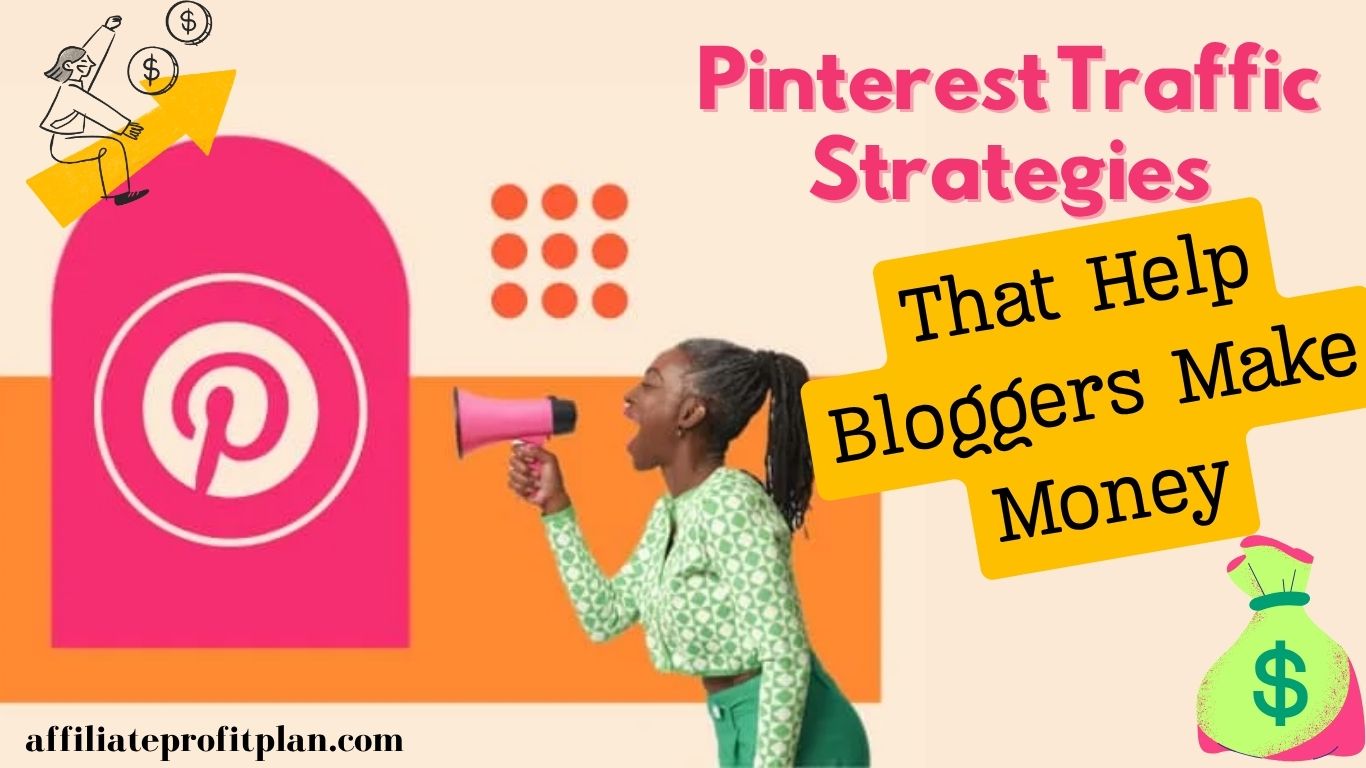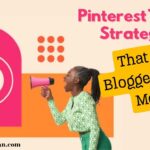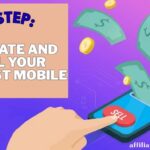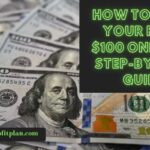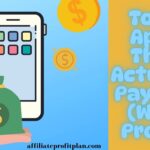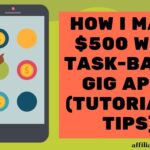Welcome to my article Pinterest Traffic Strategies That Help Bloggers Make Money. If you’re a blogger looking to make money, you’ve probably been told to “get on Pinterest” at least 47 times. And maybe you did—created a few boards, pinned some pretty images, and waited for the traffic gods to notice. But instead of blog views and affiliate sales raining down… crickets. 🦗 Don’t worry, you’re not alone—and you didn’t break Pinterest (probably).
In this post, I’m breaking down 5 Pinterest traffic strategies that actually work—no fluff, no outdated advice from 2012, and no secret handshakes required. Whether you’re just starting out or wondering why your pins are floating around in the Pinterest abyss, this guide will help you get more eyeballs on your content—and more money in your blogging pocket.
Access My Proven Blueprint for $50-$100 Daily Income – Watch This FREE Video Now >>>
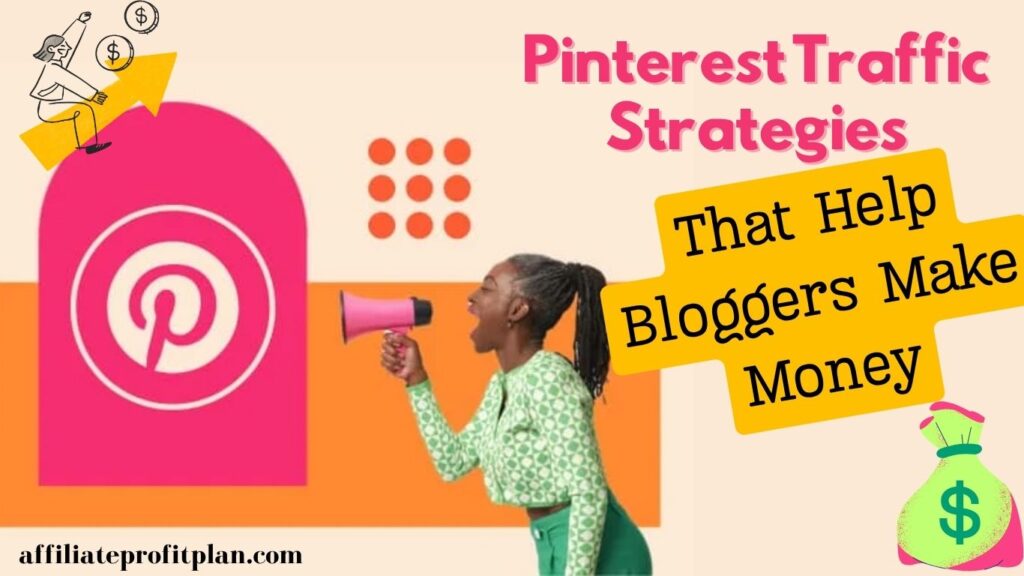
Optimize Your Pinterest Profile for Blog Growth
Before you start driving traffic, making money, or becoming a Pinterest wizard, you need to get your Pinterest house in order. Think of your profile like your blog’s first impression—it needs to look clean, clear, and like you know what you’re doing (even if you’re still figuring it out over coffee at midnight).
✅ Convert to a Business Account
If you’re still rocking a personal Pinterest account, it’s time to upgrade. Pinterest Business accounts are free, and they unlock juicy features like analytics (so you can obsess over numbers like a true blogger), the ability to run ads (if you’re into that), and a more professional presence.
Bonus: Pinterest loves when creators play by the rules. Having a biz account = algorithm brownie points.
🖊️ Craft a Keyword-Rich Bio
This isn’t the time for “cat mom & coffee lover ☕✨.” Your bio should tell people (and Pinterest’s algorithm) exactly what your blog is about. Use keywords that reflect your niche:
“Helping busy moms make money from home through blogging, digital products, and Pinterest strategies.”
Boom. Clear, helpful, searchable.
📌 Create Boards That Make Sense (to Humans and Pinterest)
Organize your boards around topics your blog covers—not random interests from 2016. Use keywords in the board titles (e.g., “Easy Meal Prep for Beginners” instead of “Yum!”) and write helpful descriptions with natural-sounding keywords sprinkled in.
Keep it niche-focused. If you blog about finance, you don’t need a board called “Boho Wedding Decor”—unless you’ve got a money-saving wedding blog post to link to. (In which case… clever.)
🌐 Claim Your Website
Pinterest wants to know you’re legit. Claim your blog domain (super simple with most hosting platforms or via a meta tag), and you’ll get access to even more data—plus your blog name will show up under your pins. It’s like verified status for bloggers.
Optimizing your Pinterest profile doesn’t take hours of your life or a degree in SEO. Just a few smart tweaks, and you’re telling Pinterest, “Hey, I’m a serious creator—send the traffic this way, please.”
Create High-Converting Pins That Get Clicks
You know the saying “don’t judge a book by its cover”?
Yeah… Pinterest users didn’t get the memo. On Pinterest, your pin is the cover—and if it doesn’t look good, no one’s clicking. Period.
Your pin could lead to the best blog post since sliced bread got its own SEO tutorial, but if the design is off? It’s getting ignored like a kale salad at a pizza party.
So here’s how to make clickable, scroll-stopping, money-making pins (without needing a graphic design degree or sacrificing your last ounce of sanity):
📏 Use the Right Size & Format
Pinterest likes its pins tall and proud. The recommended size? 1000 x 1500 px (a 2:3 ratio). Anything wider or shorter tends to get cropped or just… looks weird.
Use tools like Canva or Adobe Express—they already have Pinterest templates, so you don’t have to guess or start from scratch.
🔤 Make Your Text Pop (and Not in a “Comic Sans” Way)
Use bold, easy-to-read fonts. Pinterest users are scrolling fast, often on mobile, and if they have to squint to read your pin? Goodbye potential click.
Make sure your headline text:
- Solves a problem or promises value
- Creates curiosity (without being clickbait-y)
- Uses power words: “how to,” “easy,” “secret,” “mistakes to avoid,” etc.
Examples:
- ✅ “How I Made $1,000 in 30 Days Blogging”
- ✅ “10 Pinterest Strategies That Exploded My Blog Traffic”
- 🚫 “My Thoughts on Blogging” (yawn)
🎨 Stick to Your Branding
Consistent brand colors, fonts, and vibes help your content stand out—and makes your pins instantly recognizable (a Pinterest superpower).
Pick 2–3 colors, 1–2 fonts, and keep it you. No need to look like every other pastel pin on the planet unless pastel is your thing.
📌 Add a Call to Action (Yes, On the Pin!)
You’d be surprised how effective a simple “Read More” or “Click to Learn” can be. It gives the Pinterest scroller that little nudge to actually do something with your beautiful design.
And yes—include your blog URL or logo in the corner. That way, even if the pin goes rogue (it happens), your name still gets seen.
🧪 A/B Test Like a Pinterest Scientist
Create 2–3 versions of each pin per blog post. Change the title, colors, or layout and see what gets the best results. You’ll quickly learn what your audience likes (and what they scroll past faster than an unsolicited group text).
Good pin design = more clicks. More clicks = more blog readers. And more readers? Well… that’s where the money starts rolling in.
Master Pinterest SEO for Long-Term Traffic
Let’s get one thing straight: Pinterest might look like a social media platform full of banana bread recipes and wedding inspo, but under the hood? It’s a full-blown search engine—just like Google, but prettier and with more pastel fonts.
Access My Proven Blueprint for $50-$100 Daily Income – Watch This FREE Video Now >>>
Which means if you want your pins to show up when someone searches “how to save money fast” or “blog post ideas for introverts,” you need to speak Pinterest’s secret language: SEO.
Don’t panic. This isn’t a scary tech lecture—just a few smart moves that will help your content get discovered, clicked, and loved for months (or even years) to come.
🔍 Start with the Pinterest Search Bar
Go to Pinterest and start typing a keyword related to your blog.
Watch what happens. See those suggested phrases that pop up? That’s Pinterest literally handing you SEO gold on a sparkly platter.
Example: Type in “budget meal,” and you’ll see suggestions like “budget meal planning,” “budget meals for families,” “$5 dinners,” etc.
Guess what? Those are your keywords.
Use them. Everywhere.
🧠 Where to Use Keywords (AKA Prime Pinterest Real Estate)
To get Pinterest’s attention (and its algorithm’s love), sprinkle your juicy keywords in:
- Pin titles
- Pin descriptions
- Board titles
- Board descriptions
- Your profile bio
- Alt text on your blog images
Don’t stuff them in like a Thanksgiving turkey—just weave them in naturally, like you’re helping a friend find what they’re searching for.
📌 Create Niche-Relevant Boards (and Ditch the Random Ones)Pinterest loves focus. If your blog is about frugal living, and your boards range from “Couponing Tips” to “DIY Cleaning Hacks” to “How to Budget with a Family”—awesome. If you’ve also got boards like “Dream Vacations” and “Unicorn Cupcakes”? Time to unlist or archive those.
Keep your visible boards tightly aligned with your blog’s niche. The algorithm likes to know what you’re about—and mixed signals confuse it (and your followers).
📈 Keep It Fresh, but Make It Strategic
Pinterest rewards fresh pins—new images, new headlines, or even just slightly different designs linking to the same blog post. But don’t go wild creating 57 versions of a single post just to be trendy.
Instead, use your keywords strategically across your pins and boards so your content shows up in multiple searches over time.
Think of it as planting little SEO seeds all over Pinterest. Some will grow faster than others, but they all have the potential to bloom—and send traffic your way while you sleep.
Pinterest SEO is the difference between a pin that disappears after a day and one that keeps driving traffic for months. It’s long-term, it’s evergreen, and yes—it’s totally worth the effort.
Pin Consistently and Schedule Smartly
Okay, let’s talk about the not-so-glamorous side of Pinterest: actually keeping up with it.
You can have the prettiest pins in the universe and the most SEO-rich profile around, but if you pin once this week, forget for two weeks, panic-pin 27 times on a Sunday night, and then ghost the platform until next month… yeah, Pinterest’s algorithm is not going to be impressed. (And let’s be honest—you’ll burn out faster than a scented candle at a spa retreat.)
Consistency is key. But don’t worry—you don’t need to be glued to your phone or manually pinning like it’s 2013.
📆 The Golden Rule: Pin Regularly, Not Manically
Aim for 5 to 15 pins per day, spread throughout the day.
No, this doesn’t mean you have to live on Pinterest. It just means you need a pinning routine that tells Pinterest, “Hey, I’m active, I’m relevant, and I’ve got great stuff people love.”
Spoiler: you do.
🤖 Use a Scheduling Tool (and Reclaim Your Sanity)
Enter your new best friend: Tailwind.
Tailwind lets you schedule pins in advance, set optimal posting times, and batch your content like a productivity ninja.
Other options:
- Pinterest’s built-in scheduler (great for up to 10 pins/day)
- Planoly (especially if you use it for Instagram too)
You can spend one afternoon a week scheduling pins and then not think about it again until your next coffee-fueled content sprint.
🔁 Reuse and Repin (Strategically)
Pinterest used to be all about mass repinning—but times have changed. Now, the platform prefers fresh content, meaning new images, headlines, or designs—even if it links to the same blog post.
Here’s a smarter approach:
- Create 3–5 unique pin designs per post
- Space out when you post them (don’t pin them all at once!)
- Repin your top-performing pins to relevant boards after a few weeks
Use Tailwind’s analytics to spot your “all-star” pins—and give those babies the red carpet treatment.
💡 Quality > Quantity (Yes, Really)
Gone are the days when you needed to pin 50 times a day like your rent depended on it. Pinterest is now more about valuable, helpful, visually appealing content than raw volume.
In other words: don’t pin junk just to fill a quota. One great pin that gets clicked is worth more than ten that get ignored (and hurt your reach).
Consistency + automation = Pinterest success without burnout.
You’ll build momentum, train the algorithm to love you, and make Pinterest your trusty blog traffic machine—all while keeping your weekends (and sanity) intact.
Funnel Pinterest Traffic into Income Streams
So, you’ve optimized your profile, created beautiful pins, mastered Pinterest SEO, and scheduled your content like a boss. Pinterest traffic is finally flowing to your blog and your analytics dashboard is starting to look… kinda spicy. 🎉
Now what?
It’s time to turn those clicks into cash—because as fun as pageviews are, they don’t pay the bills until you give them somewhere profitable to go. Pinterest users are primed to take action (they’re literally searching for solutions), so all you need to do is guide them down the right path.
Let’s talk about how to funnel that beautiful traffic into income—without feeling like a used car salesperson.
💰 Send Pins to Affiliate-Focused Blog Posts
Pinterest + affiliate marketing = 💸.
Create content that naturally promotes products or services you use and love—think tutorials, comparisons, or “best of” lists. For example:
- “5 Budget Planners That Helped Me Save $1,000”
- “The Best Tools I Use to Grow My Blog (And Make Money Doing It)”
Then? Pin the heck out of it.
Use keyword-rich pin titles and descriptions so people actually find your post, and make sure those affiliate links are clearly disclosed and genuinely helpful.
Remember: helpful = high-converting.
🛍️ Promote Your Own Products
Selling your own stuff? Pinterest is your playground.
Link pins directly to:
- Digital products (eBooks, printables, templates, courses)
- Product landing pages
- Shopify or Etsy stores
- Sales pages for coaching or services
Pinterest users are buyers, not just browsers—especially in niches like budgeting, DIY, wellness, and business.
Hot tip: Add “Free Download” or “Shop Now” to your pin design to boost clicks. Pinterest users love free value.
📧 Grow Your Email List (and Monetize It Later)
If you’re not quite ready to sell, use Pinterest to grow your email list instead. Link your pins to a blog post with a high-converting lead magnet, like:
- A free checklist
- A printable workbook
- A 5-day email challenge
- A “cheat sheet” version of a full post
Once you’ve got them on your list? Nurture that relationship and introduce affiliate offers or paid products via email. (Subtle. Strategic. Powerful.)
📊 Track What’s Making You Money (and Double Down)
Pinterest isn’t a “set it and forget it” platform. Check your analytics regularly—both on Pinterest and your blog—to see:
- Which pins are bringing the most traffic
- Which posts are making the most money
- Which products or links people are actually clicking
Once you know what’s working, do more of it. Update those posts. Create more related pins. Build new offers around proven interest.
This is how traffic becomes income—and income becomes reliable.
Pinterest is more than just a traffic machine. It’s a conversion engine—if you know how to lead people from “Ooh, that pin looks interesting” to “Take my money!”
So go forth and funnel with confidence.
You’ve earned every click—and every coin that comes from it.
Conclusion
Pinterest might look like a dreamy world of slow cooker recipes and farmhouse decor, but underneath all that soft lighting and mason jar inspiration is a powerful platform that can drive serious traffic—and yes, serious income—to your blog.
Access My Proven Blueprint for $50-$100 Daily Income – Watch This FREE Video Now >>>
The best part? You don’t need to have 100K followers, a six-figure ad budget, or pins that look like they were designed by an actual unicorn. You just need strategy, consistency, and a willingness to test, tweak, and keep going (even when your first few pins flop harder than your attempt at sourdough during lockdown).
To recap:
- Optimize your profile so Pinterest knows what you’re all about
- Design pins that are actually clickable
- Use Pinterest SEO to show up in front of the right eyeballs
- Pin consistently (without going mad) using smart scheduling tools
- And most importantly, monetize your traffic—because pretty pins are cool, but paid blog income is cooler
If you’re willing to stick with it, Pinterest can become one of your most reliable, high-converting traffic sources. It’s not about overnight success or viral pin fame—it’s about building a system that grows quietly in the background while you keep creating, connecting, and maybe sipping coffee in your pajamas. (Living the dream.)
So go ahead—dive into your Pinterest strategy, start pinning with purpose, and remember: that next click could be the one that leads to a sale, a subscriber, or your next big blogging win.
Now get out there and pin like a pro. You’ve got this.
Thanks a lot for reading my article on “Pinterest Traffic Strategies That Help Bloggers Make Money” till the end. Hope you’ve helped. See you with another article.
